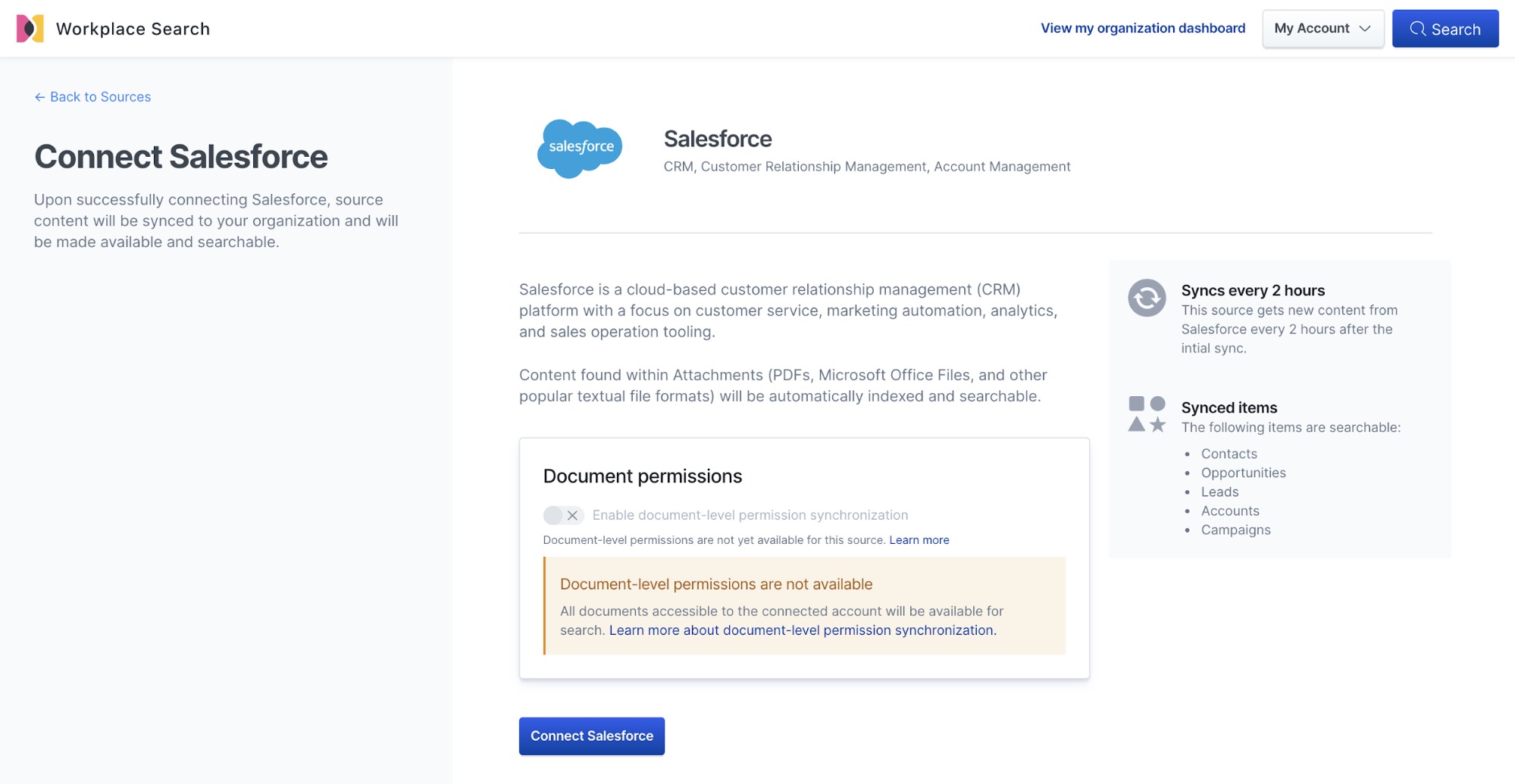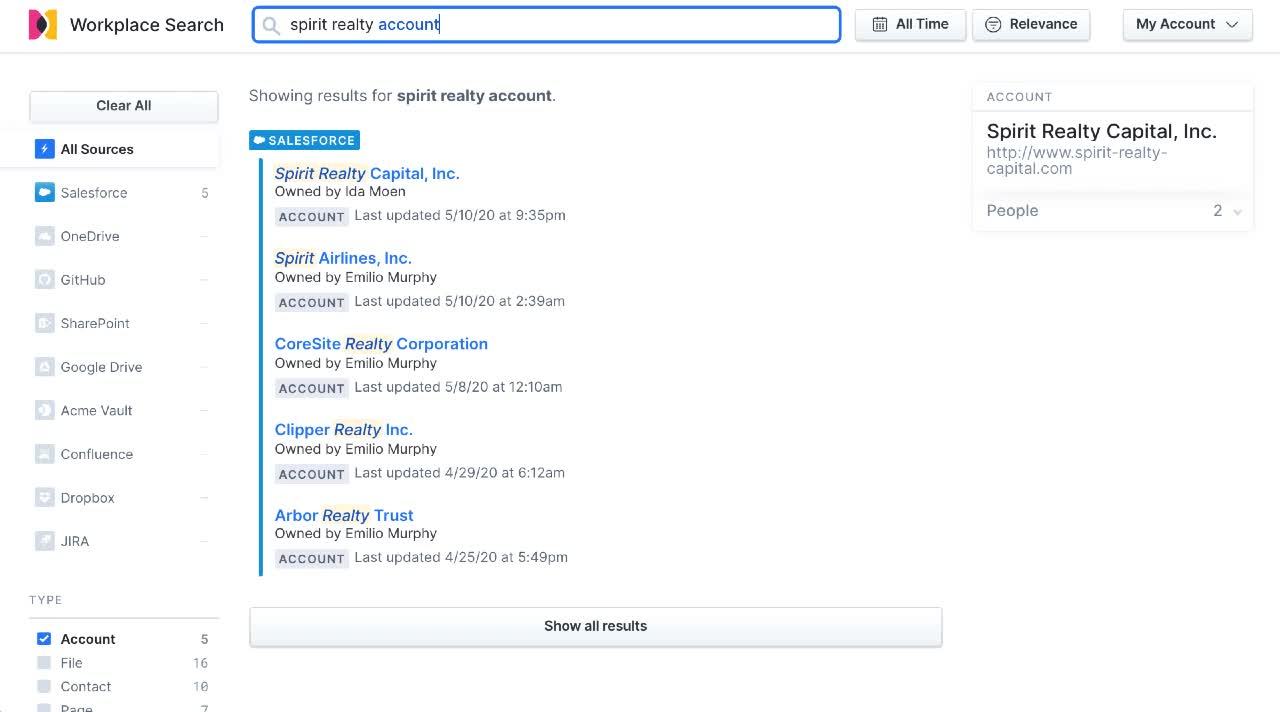Searching Salesforce: Boosting your teams' productivity with Elastic Workplace Search
“If it’s not in Salesforce, it didn’t happen.”
You’ve undoubtedly heard it, or perhaps you’ve said it yourself. And why not? Over the past 15 years, Salesforce has redefined the CRM industry, becoming the de facto solution for managing sales, customer service, marketing automation, and analytics functions with its cloud-only approach.
As Salesforce’s solutions have expanded so has their user base. It’s become the application of record for accessing customer and prospect data that can be spread out across account plans, sales opportunities, email exchanges, meeting notes, marketing campaigns, and lead responses.
But as Salesforce users well know, native search inside Salesforce can lead to inconsistent or inconclusive results, driving up your teams’ frustration, but unfortunately not their productivity. And the difficulty of finding content isn't unique to Salesforce — your teams are probably feeling that challenge in the dozens of other content sources your company uses, too.
With Elastic Workplace Search, you can improve productivity on your sales, marketing, and customer service teams by delivering content across multiple content sources with a simple search in a friendly, consumer-like search experience. And because it’s built on top of Elasticsearch, results are fast and relevant, and your implementation can scale easily.
Now cut to Monday morning’s sales pipeline meeting. Picture your remote sales reps easily bringing up the latest RFP response in milliseconds on their phone by entering “Acme 2020 RFP” in a single search bar. Elastic’s relevance engine works seamlessly behind the scenes to accurately decipher your rep’s intent and meaning from thousands of pieces of content spanning all your different sources.
Surfacing content with Salesforce
The Salesforce connector provided with Workplace Search automatically captures, syncs, and indexes the following Salesforce items for easy access and retrieval:

- Contacts: Including ID, name, title, address, and timestamps
- Opportunities: Including ID, name, associated account, and timestamps
- Leads: Including ID, name, associated account, and timestamps
- Accounts: Including ID, name, address, owner information, and timestamps
- Campaigns: Including ID, name, type, description, and timestamps
- Attachments: Including ID, owner information, extracted textual content, and timestamps
To connect your Salesforce content to your Elastic Workplace Search environment, configure the Salesforce connector found in your source list within Workplace Search, and then connect them to your organization.
Can’t stop. Won’t stop.
And why stop at Salesforce data? With Elastic Workplace Search you can easily index content from popular sources such as Google Drive, ServiceNow, Dropbox, Microsoft One Drive, Microsoft 365, GitHub, Atlassian’s Jira, and many, many more with clicks rather than code — saving your developers from one less project.
And if you have custom content sources or other applications that you’d like to search across? You can index any source of content you’d like with the Custom Source API, and those search results will live right alongside the others in Workplace Search.
Getting started
What are you waiting for? Start a free trial on Elastic Cloud, and then check out our detailed Salesforce connector guide.
